Utah County Birders
Newsletter
March 2019
Contents
Monthly Meeting
Upcoming Field Trips
Captain's Log
Bird of the Month
Field Trip Reports
Printable Version
MARCH MEETING:
Thrusday March
14th,
2019 at 7:00 PM - at the
Monte L. Bean Museum.
Map to Museum
UCB Club Meeting- Come and share thoughts with the board and other members for
future field trip and monthly meeting ideas, big birding trip ideas, and provide
input on adopting a shoreline section of Utah Lake.
FIELD TRIPS:
March 2, 2019 - Waterfowl and Raptors!!!
Meet at the Payson Walmart at 9am NE corner. We look for waterfowl and Raptors!
What a combination! We will start at Spring Lake, then go to Salem Pond, Salem
Marshes and North Salem Marshes. We will then head to the Benjamin area looking
for Raptors on our way to Lincoln Beach!
March 23.2019 - Greater Sage Grouse-Emma Park Road
Meet at 6 am at the Chevron just off of Powerhouse road at the mouth of Spanish
Fork Canyon. It is a early trip but well worth it!
Utah County Birders
Captain’s March 2019
by Keeli Marvel
Songs and Sounds of Birds
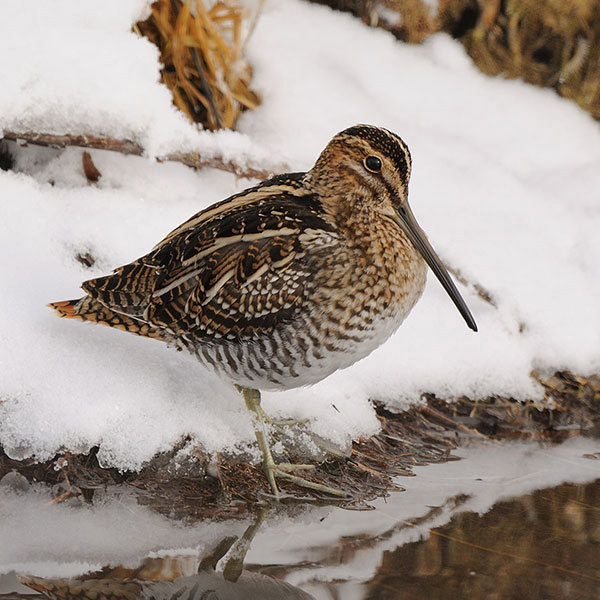 |
|
Wilson's Snipe
by
John Crawley |
|
The
diversity of sounds birds are able to produce is amazing – just as amazing
as the ways they produce them. Birds make sounds for a number of reasons.
The number one reason is to attract a mate and defend a territory, but other
reasons include individual identification, communication of a threat like
the presence of a predator, or other communication such as the location of
food, or the desire to be fed. Bird vocalizations can take several different
forms including songs, calls, call notes, and chip notes. Some species even
have regional dialects (like accents).
Some species have a distinct call or song that rarely varies, while other
species, like the Northern Mockingbird, mimic other birds
and build up a
repertoire of various calls. My favorite example of this is the lyrebird
that is found in Australia. If you pull up the YouTube video website and
search for lyrebird there is a video clip narrated by Sir David Attenborough
of a lyrebird mimicking the most remarkable sounds. They can mimic just
about everything, and
the one in the video mimics chainsaws, car alarms, and
camera shutters. They build as diverse a repertoire of calls as possible for
the same reason Northern Mockingbirds do – to attract a mate— and the one
with the most diverse collection of calls may be the one that gets the girl.
Some species in the parrot and corvid (ravens, crows, etc…) families are
even able to mimic human speech.
Some bird species communicate with sounds that are not actually
vocalizations. Woodpeckers use their beaks to drum on trees and a variety of
other surfaces in their environment. Other species produce noise
mechanically through the manipulation of air and feathers. An example of
this is the noise Wilson’s Snipe make. I remember the first time I heard
this, I was driving around the end of Deer Creek and I stopped to scan a
marsh and heard this sound I could only describe as a “wubba wubba wubba”
sort of noise. I found out later it’s called winnowing, and snipe use the
noise to attract mates and defend territory. The sound is made by moving air
very quickly over their specially modified outer tail feathers. Another
example of unique bird noises many of you are familiar with is the sound the
male greater sage-grouse make when they are on the lek, or communal breeding
ground. The bubbly or blurby sound is made by the inflation of air sacs in
the male’s chest, and is used as a display to attract females. Another very
different lekking bird group in South America, the manakins, make unique
buzzy/snappy noises during their courtship display. This noise is made by a
movement of their wings snapping against their legs very very quickly.
Bird calls can be very difficult to learn, however, learning to ID birds by
their call can be very helpful in the field. Many resources exist to help
birders learn to identify bird calls. Smart phone apps such as iBird provide
a handy field guide complete with recordings of songs and calls. A free
online resource called Xeno Canto (http://www.xeno-canto.org/)
provides a database of recorded bird sounds complete with location
information (good for comparing dialects). The best teacher though, in my
opinion, is practice and experience.
As we move into spring in the next couple of months the birds are going to
start getting more vocal as they migrate back to their breeding habitats and
start establishing territories and advertising for mates. My advice is to
get out there, see some birds, and see how many calls you can identify. You
might be surprised! Happy Birding!
Keeli Marvel, President – Utah County Birders
BIRD OF THE MONTH:
|
Passenger Pigeon
(Ectopistes migratorius)
by Nichole Telford
What
do dinosaurs, dodos, and passenger pigeons have in common? They are
all now extinct, never to live again. The passenger pigeon is a bird
that was driven to extinction in the 1900s. Consequently, I have never
seen it, but I have read sources written by those who had. Charles
Whitman, a keeper of captive passenger pigeons, described them as
being actors. They would readily attack birds that tried to steal
their nests, but if they fought back the pigeons would shy away, even
if the bird was half their size. Audubon saw the passenger pigeons
when they passed him in a large flock that lasted for three days.
Richard Fluke was a friend of Martha, the last passenger pigeon. He
was also probably one of the last people alive who saw passenger
pigeons. The passenger pigeon was killed by humans hunting them too
much.
The passenger pigeon sort of looked like a large mourning dove in
shape. Males had blueish heads and red breasts. Females were gray all
over. Squabs, passenger pigeon babies, were fat from feeding off of
pigeon milk, produced by both the mother and
|
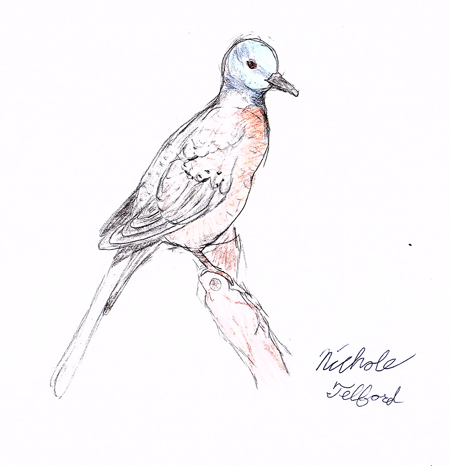
Drawing by the author |
the father. Squabs would
be so fat that if they fell out of their nests (which were just masses
of twigs and sticks) they would just sit on the ground and their
parents would have to feed them there. Squabs, males, and females were
all good to eat, so they were hunted by Indians and white men.
Above it is mentioned that humans hunted passenger pigeons to
extinction. Now, understand that passenger pigeons were by no means
rare. In fact, they probably had the biggest population of birds in
North America, around 5 billion birds. Now, passenger pigeons went
from 5 billion to none in about 50 years, so it was a big deal.
Indians hunted passenger pigeons before European settlers arrived, but
it was just like the herds of bison in the plains. Indians hunted
them, but wouldn’t have ever hunted them so much they could be close
to extinction. Passenger pigeons were tasty and populous. That
combination made them sought after and easy to kill. I found recipes
that called for six pigeons. That means six or more being killed every
day when they felt like having pigeon for dinner.
There were even competitions with prizes to see how many passenger
pigeons you could kill. Many people got dozens of pigeons, and others
got around 50. Add that up and you get hundreds of pigeons killed for
the sake of sport. I don’t know how often these contests were held,
but I would imagine that at least a couple thousand pigeons were
killed each year just from these contests. Of course, several more
thousands of pigeons taken away for food, and many more were shipped
across railroads to different states. Some numbers I got from a book
by Clive Ponting are, “During 1874 Oceana County in Michigan sent over
1,000,000 birds to the markets in the east and two years later was
sending 400,000 a week at the height of the season and a total of
1,600,000 in the year.” 1.5 million birds
from one county in Michigan, just one.
No wonder this species went extinct.
In 1900, hunting was no longer profitable. There weren’t enough
passenger pigeons to bother with, as flocks had gone from millions to
only a few dozen. Many people, realizing the scarcity of the birds,
tried keeping captive flocks. Those small flocks died out from avian
tuberculosis and other things. But Charles Whitman had sent one small
female to the Cincinnati Zoo. That female’s name was Martha. She sat
on a perch for people to stare at her, throw sand at her in hopes of
making her fly. Her passenger pigeon companions, including a male
named George, died, leaving her all alone. Martha lived for a long
time, trembling with palsy, never laying a fertile egg, until
September 1st, 1914. No one knows exactly how she died, but they found
her on the floor of her cage, still and silent. The passenger pigeon
would never fly again.
Only one good thing comes from this, and that is the laws passed
because of their extinction. First, the Lacey Act. It protects endemic
birds and wildlife, creating punishments for killing like the sort the
passenger pigeons faced. From the Lacey Act there came the Bird
Migratory Species Act. This law protects migratory species’ plumage,
their nests, and them in general. Finally, people were just more aware
of the harm they could do to the environment. It is because of that
awareness that the California Condor for example, is alive today. When
people realized they were dying off from lead poisoning, they actively
did something about it, raising the population to a better number. We
ourselves can learn from the passenger pigeon too. The passenger
pigeon is gone, and it will never come back (unless we find a way to
do genetic engineering like in Jurassic Park). However, we can protect
the bird species we know in order to stop a tragedy like the passenger
pigeon’s extinction from ever happening again.
Click for References
|
|
|
|
|
|
|
Field Trip Reports
|
|
|
|

|
|
23 Feb 2019
Delta Snow Goose
Festival
Report by Suzi Holt
Photos by Suzi Holt & Amanda Tinoco
|
|
Fifteen birders left Payson around
7:30 am and headed west to Delta. We passed a few Rough-legged Hawks,
Red-tailed Hawks, a Golden Eagle, lots of Common Ravens,
Woodhouse's Scrub Jays and Horned Larks on the way down. We
arrived about 9:15 am at Gunnison Bend Reservoir and it was frozen! The DNR
told us to head to 50, then 5000 then go right on 500 to 3000. On our way
East on 500 we saw a huge flock flying to the South. We watched them circle
about and land in the field. They were so close! We saw them without a scope
this year from the warmth of the car. We counted at least 8 Ross's Geese and
it was fun to have them close enough to compare with the Snow Geese. We
estimated around 5000 Snow Geese! Such a beautiful sight! Everyone needs to
experience this at least once.
|
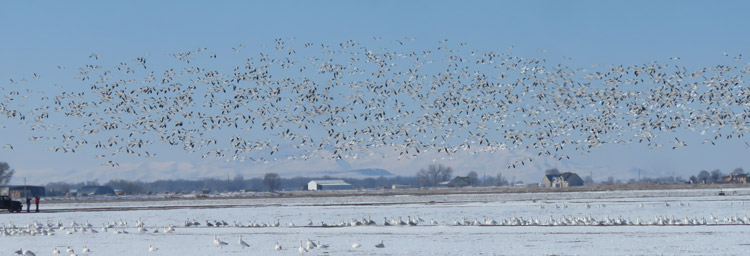 |
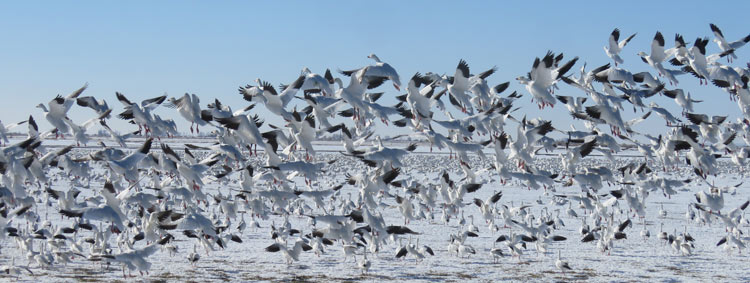 |
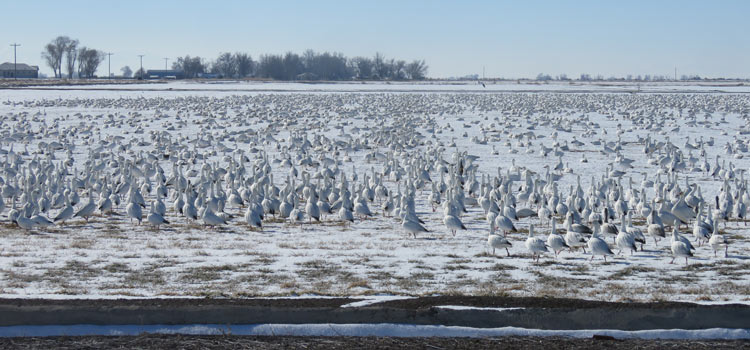 |
|
We took quite a few photos and then decided to wait for
them to fly again. About one minute later something triggered them to fly
and half of them took to the skies. What a sight and what a sound! We were
so happy!
|
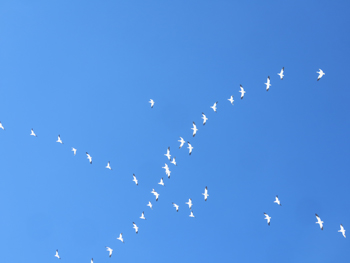 |
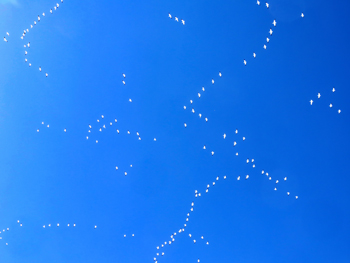 |
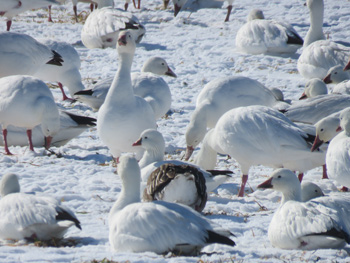 |
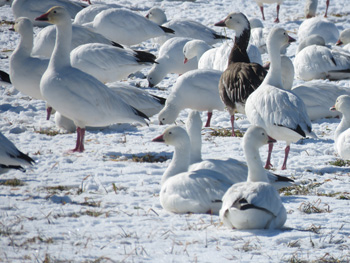 |
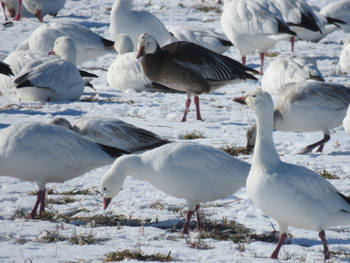 |
 |
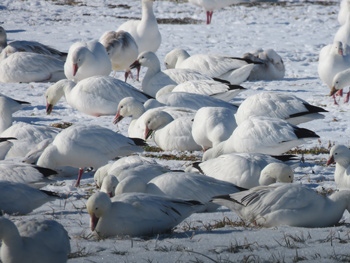 |
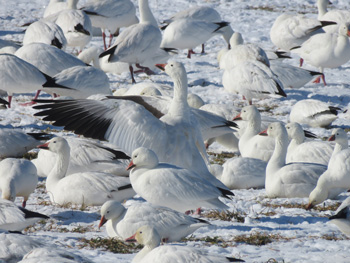 |
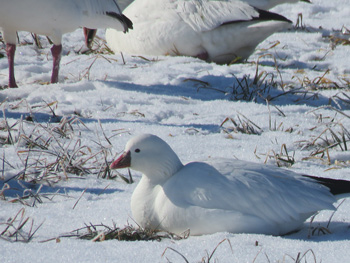 |
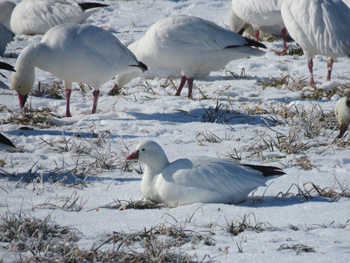 |
|
We decided to head back to Mosida to try
for the Longspurs. The snow had melted a lot and we only saw about 15
Horned Larks. We did have a few bonus birds, Rough-legged Hawks,
Red-tailed Hawks, a beautiful Ferruginous Hawk and a couple
Great-horned Owls. We stopped at Warm Springs for Jeremy Telford's
birthday cake and Snow Geese Balloons! Thanks to all who came! |
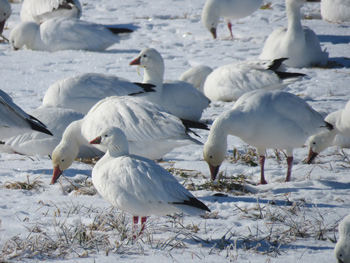 |
|
|
|
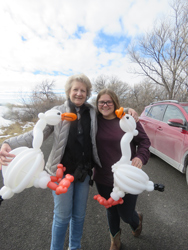 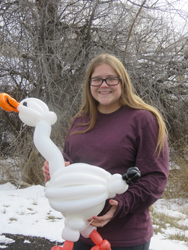 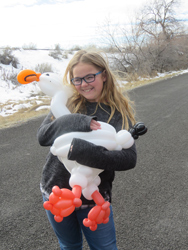 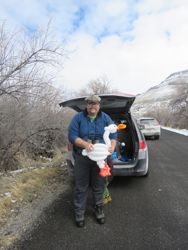 |
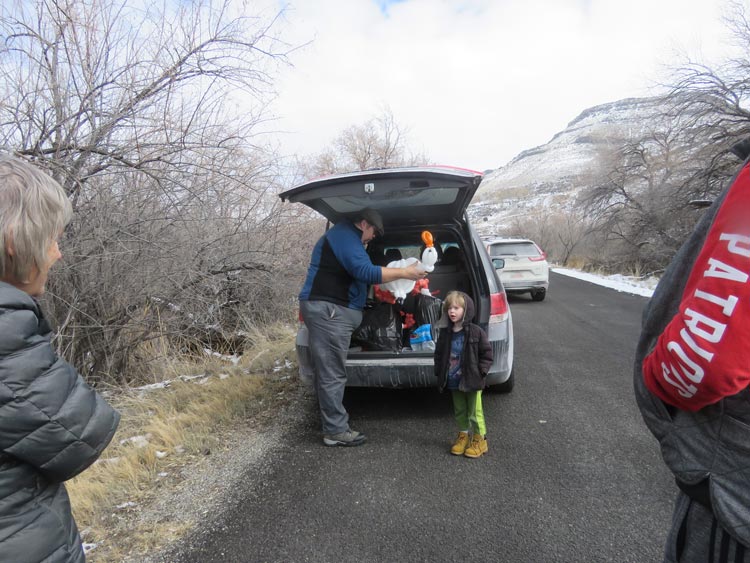 |
|
|
|
-
2 Feb 2019
Gull Identification Clinic
Report and Photos by
Suzi Holt
-
Yesterday
we heeded the invitation from Billy
Fenimore and
a group of us made our way up to the George S and Delores Dore'
Eccles Wildlife Education Center in Farmington Bay for a Gull
Identification Clinic/field trip. We were welcomed by Billy and
other volunteers and saw many dear birding friends. It did not
disappoint! It was amazing!!! I could have sat there for another 2
hour rerun by Cameron
Cox!!!
He made gulling look so fun and so easy...I was pumped to get out in
the field to give it a try. I learned a lot but most important was
"Structure and Size". And to also recognize the gulls as you would a
friend not just try to identify them. It will take practice! I am so
grateful for experts and their willingness to share and that is
what Billy
Fenimore and
the Education Center is all about. I would highly recommend taking
your families. Get up there, the resource is phenomenal!
After the presentation we all headed out in a huge group to
practice. I was grateful tor the opportunity to practice and to
share in the enthusiasm of so many as we watched 100's of "seagulls"
GULLS, small ones from Ring-billed to Icelands (Thayer's) and
California to the big Herring and Lesser Black-backed gulls. They
were poking at 6-10 pound sushi (CARP)!
I loved watching them fly and practiced looking for the mirror, the
gony spot on the bill and the backwards 7 wing tip, the pot-bellied
or the slim and sleek, the rounded or bulky squared off head, the
clean white or the ones that were just a "ness".. What a fun
experience!!! Thanks to so many from Nikon to Swarovski scopes ready
and willing to share. Thank you! Thank You! Thank You!
Here are a few of my so so good shots, but yes I could recognize a
few of them! |
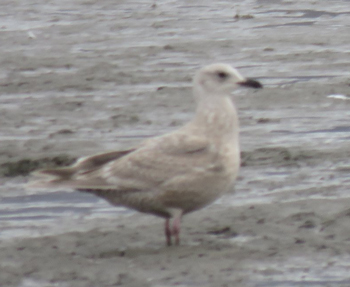 |
This one even had Cameron a
little stumped...he said it was either a Icelands-Thayers or a
Thayer's-Icelands I think that is what he said  :) the
expert always learning. :) the
expert always learning.
|
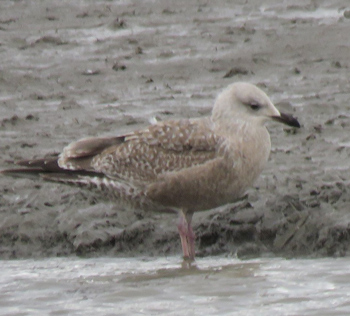 |
|
|
Iceland's (Thayers) Gull. Shiny black bill,
long winged, pink legs. |
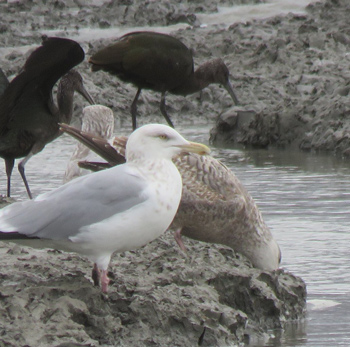 |
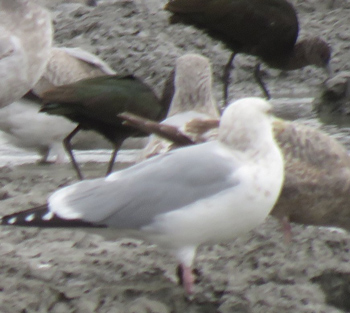 |
|
Herring Gull, sorry I cut of the primaries but they are black and do
have white spots Chunky body, big head, huge bill, light eye, pink
legs.
|
...see here are the primaries on that Herring gull
|
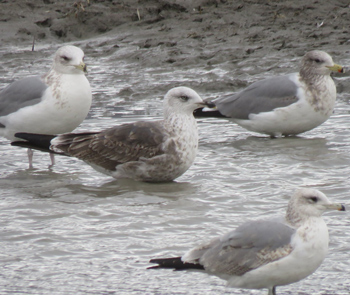 |
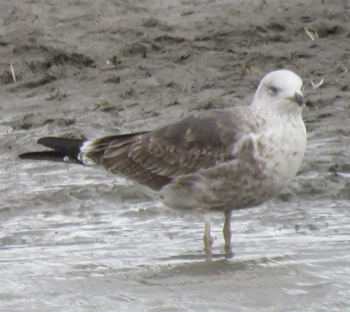 |
|
Lesser-black
backed Gull. Charcoal mantle, tiny bill, darkish eye, pot-bellied,
rounded head, upright posture, adult has almost purplish legs, and
translucent inner window on wings in flight.
|
Lesser Black-backed Gull. |
|
|
|
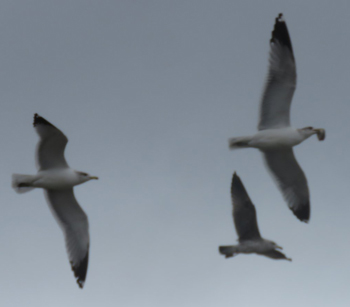 |
|
|
Ring-billed Gulls in flight? |
|
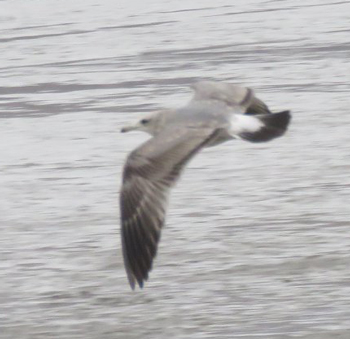 |
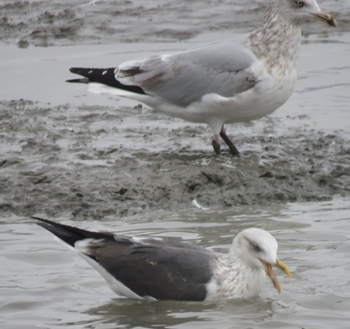 |
|
2nd winter California Gull?
|
Herring Gull
(top) and Lesser Black-backed Gull (bottom)?
|
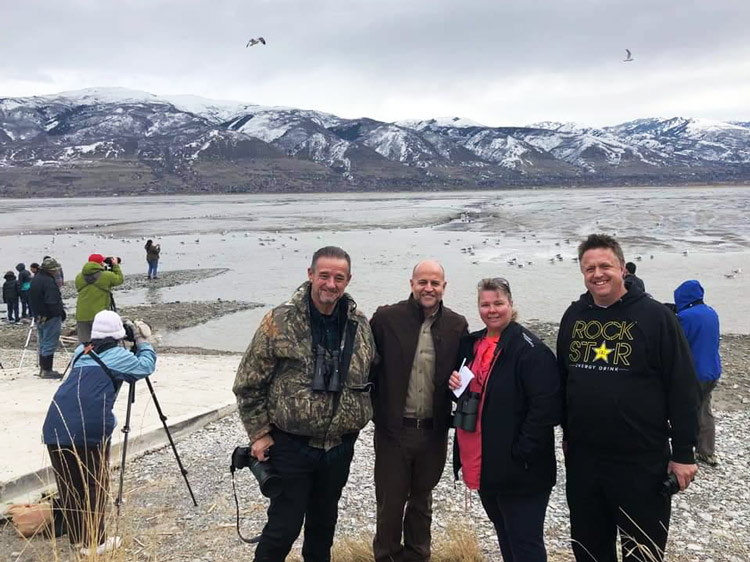 |
|
Terry
Ried. Billy Fenimore. Suzi Holt and James Hoffman |
|
|
|
|
|
































